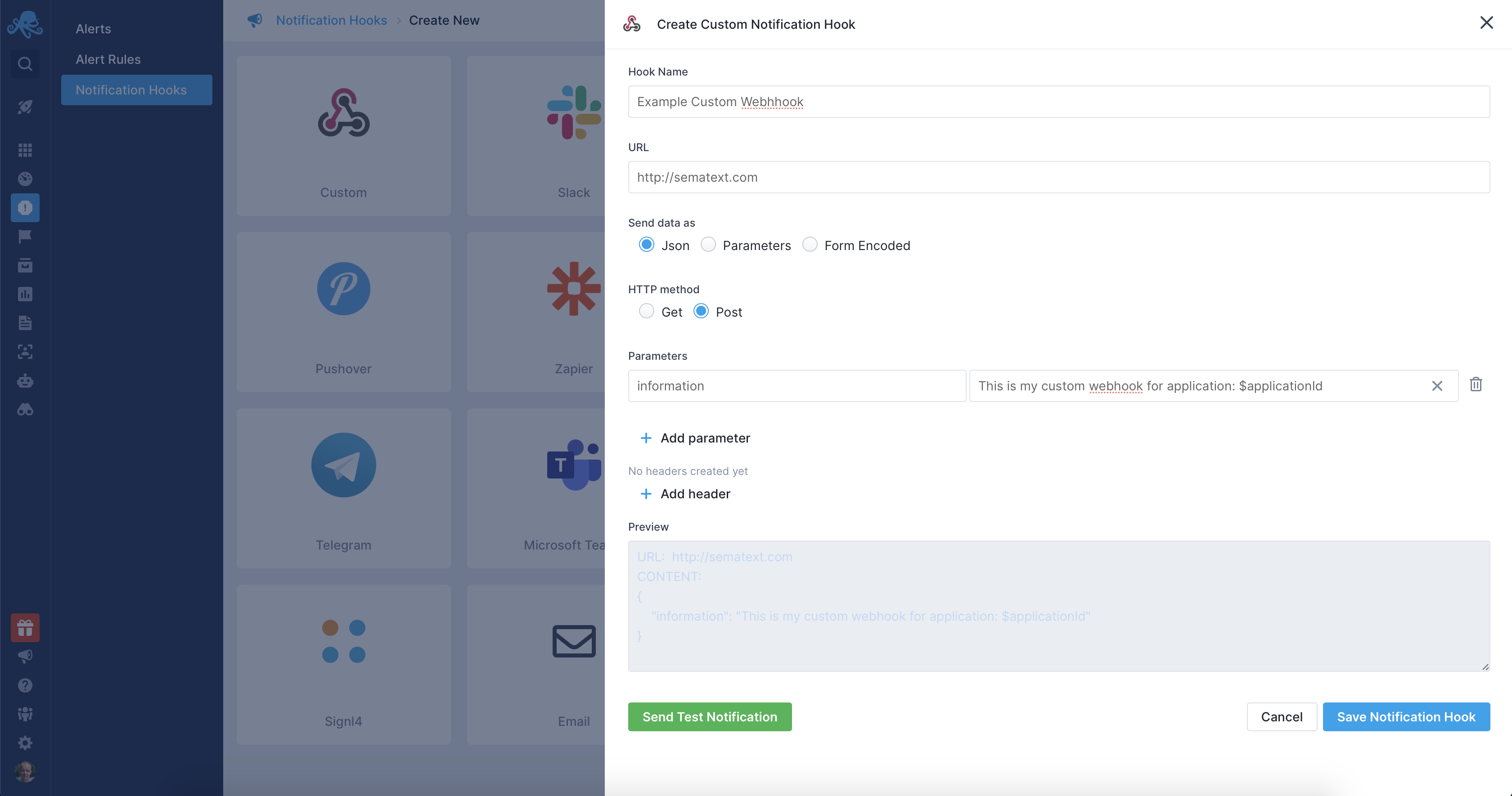Custom Params
Sematext supports sending notifications to a custom Webhook. When configuring the Webhook a number of variables can be used to customize the information sent from Sematext to the destination of your choice.
The following variables are supported:
- $webHookName - the name of the webhook
- $applicationId - App identifier
- $applicationToken - App token IMPORTANT: Anyone with access to your App token can access data in your App. Use $applicationToken only if you are sure there is no risk of the token getting compromised.
- $ruleType - the type of the Alert Rule. Can take one of the following values: HEARTBEAT, AF_VALUE, AF_ANOMALY_VALUE, LOGSENE_VALUE, LOGSENE_ANOMALY_VALUE, RUM_VALUE, RUM_ANOMALY_VALUE, SYNTHETICS_RESULT_VALUE.
- $createTimestamp - alert creation timestamp in UTC
- $backToNormal - true when the notification is for the incident going back to non-alerting state; false otherwise
- $title - alert title, currently equal to Sematext
- $description - alert description
- $url - webhook URL. IMPORTANT: to ensure data is sent to the destination securely you must use HTTPS, not HTTP.
- $troubleshootUrl - the URL that leads to Alert Details screen in Sematext
You can use any of the above variables in the parameters when you create your custom Webhook:

If the alert definition includes a Group by tag, the tag values that triggered the alert are included automatically within the webhook payload.
For example, if you create a Heartbeat alert, grouped by os.host

The webhook payload will have the os.host info that triggered the alert within the filters field.
